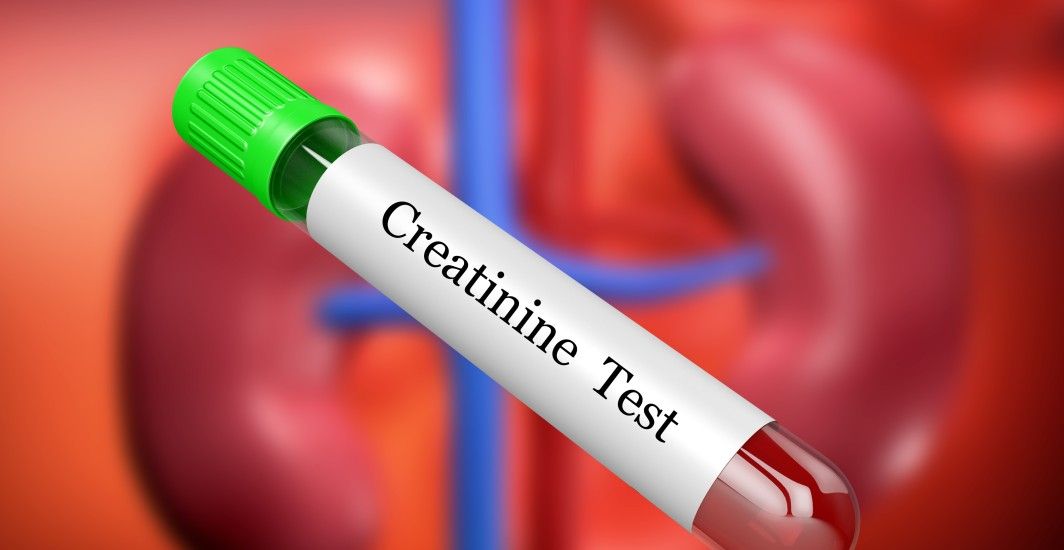General Health
Understanding Different Types of Fatty Liver Disease
5 min read
By Apollo 24|7,Reviewed by Dr. Srividya Kalavagunta, Verified by Dr. Divya Chandrasekharan, Published on - 12 August 2024
Share this article
0
0 like
.jpg?tr=q-80)
Fatty liver disease, also known as hepatic steatosis, is a condition that often sneaks in unnoticed, quietly wreaking havoc on our liver's delicate balance. In this condition, excess fat accumulates in the liver, which leads to liver inflammation, damage, and even more severe conditions like liver cirrhosis. The primary medical term for fatty liver disease is NAFLD, which refers to a fatty liver that is not associated with alcohol use.
NAFLD is of two types: Nonalcoholic fatty liver, otherwise known as simple fatty liver and Nonalcoholic steatohepatitis. To simplify, if you have fat but no damage to your liver, the disease is called nonalcoholic fatty liver disease. If you have fat in your liver plus signs of inflammation and liver cell damage, the disease is called nonalcoholic steatohepatitis.
In this article, we will dive deep into various types of fatty liver disease, particularly nonalcoholic fatty liver, its symptoms, diagnosis, lifestyle changes and treatment.
Types of Fatty Liver Disease
Nonalcoholic Fatty Liver Disease
- Metabolic dysfunction-associated steatotic liver disease (MASLD) or Nonalcoholic Fatty Liver Disease (NAFLD): In this condition, there is an accumulation of fat in the liver, not due to excessive alcohol consumption but associated with metabolic risk factors like obesity, diabetes mellitus, dyslipidemia, and hypertension. MASLD can progress to a more severe form where there is liver inflammation, leading to fibrosis (scarring), cirrhosis, and liver failure.
- Metabolic dysfunction-associated steatotic liver disease (MASH) or Nonalcoholic steatohepatitis (NASH): It is a progressive form of fatty liver disease characterised by liver inflammation and damage, which is due to metabolic dysfunction and not because of alcohol consumption. Metabolic conditions such as obesity, type 2 diabetes, dyslipidemia (abnormal lipid levels), and hypertension (high blood pressure) can lead to MASH or NASH.
Alcohol-related Fatty Liver Disease
- Alcohol-associated liver Disease (ALD) is caused due to excessive alcohol consumption. There can be simple fat accumulation in the liver or severe liver inflammation and damage. Alcohol-associated liver disease (ALD) includes several liver disorders, including alcoholic hepatitis, alcohol-associated steatosis, alcohol-associated steatohepatitis, and alcohol-associated cirrhosis.
- Metabolic dysfunction- and alcohol-associated liver disease (MetALD): Metabolic dysfunction- and alcohol-associated liver disease (MetALD): It is a type of liver disease that occurs due to metabolic dysfunctions like obesity, type 2 diabetes, dyslipidemia, hypertension and moderate alcohol consumption. The alcohol consumption in MetALD is lesser than in pure alcohol-related liver disease but is still sufficient to cause damage to the liver when combined with metabolic dysfunction.
Symptoms of NAFLD
While many people with NAFLD may not experience noticeable symptoms, the disease can still cause significant liver damage over time. Here are some of the symptoms associated with NAFLD:
- Pain in the upper right abdomen
- Persistent fatigue or tiredness
- Unintentional weight loss
- Generalised weakness
- Jaundice (Yellowing of the skin or eyes)
- Swelling in the abdomen and legs
Causes of NAFLD
- Obesity: Excess body weight, particularly around the abdomen, is a major cause of fat accumulation in the liver.
- Metabolic Syndrome: Metabolic syndrome, a cluster of conditions including high blood pressure, high blood sugar, excess body fat around the waist, and abnormal cholesterol levels, significantly increase the risk of NAFLD.
- Type 2 Diabetes: People with type 2 diabetes are at higher risk due to insulin resistance and increased fat in the liver.
- High cholesterol and triglycerides: Elevated cholesterol levels and triglycerides contribute to fat buildup in the liver.
- Sedentary lifestyle: Lack of physical activity leads to obesity and insulin resistance, major risk factors for NAFLD.
- Hypothyroidism: An underactive thyroid can slow down metabolism, leading to weight gain and increased risk of NAFLD.
Risk Factors for NAFLD
- Age: Although NAFLD can occur at any age, it is more common in individuals over 40 years of age.
Gender: NAFLD is more common in men than in women. - Family History: A family history of NAFLD or other metabolic conditions can increase the risk.
- Malnutrition: Certain deficiencies, such as a lack of protein, can contribute to liver fat accumulation.
Some people are genetically more prone to developing NAFLD, making them more susceptible to the condition than others. In addition, individuals with more than one metabolic factor have a high risk for progression to MASH.
Diagnosis of NAFLD
The diagnosis and screening of NAFLD involves:
- Liver Function Tests (LFTs): Your doctor will suggest this test to measure levels of liver enzymes such as alanine aminotransferase (ALT) and aspartate aminotransferase (AST). Elevated levels may indicate liver inflammation or damage.
- Fasting Blood Glucose and Hemoglobin A1c: The doctor will check for diabetes or pre-diabetes.
- Lipid Profile: The doctor will check cholesterol and triglyceride levels.
- Complete Blood Count (CBC): The doctor will check for anaemia or other blood abnormalities.
- Ultrasound: Ultrasound is suggested to identify steatosis but cannot distinguish between simple steatosis and steatohepatitis.
- Computed Tomography (CT) Scan: The doctor will suggest this to detect liver fat.
- Magnetic Resonance Imaging (MRI): It is more accurate than ultrasound and CT in quantifying liver fat. The doctor will suggest this to assess liver stiffness, indicating fibrosis.
Lifestyle Changes and Treatment of Fatty Liver Disease
Treating underlying conditions such as metabolic syndrome, type 2 diabetes, high cholesterol, and hypothyroidism is crucial for managing fatty liver disease. Above all, the most important thing is to change your lifestyle. These include:
- Maintain a healthy weight. Combine a healthy diet with regular physical activity and avoid rapid weight loss, which can worsen liver disease.
- Eat a balanced diet containing fruits, vegetables, whole grains, lean proteins, and healthy fats (e.g., omega-3 fatty acids).
- Limit sugary foods, beverages, and refined carbohydrate intake to reduce liver fat.
- Opt for foods with monounsaturated and polyunsaturated fats (e.g., olive oil, avocados, nuts) over saturated and trans fats.
- Engage in at least 30 minutes of moderate-intensity aerobic exercise every day.
- Minimise alcohol consumption or avoid it altogether to protect your liver health.
These changes are the first steps in treating metabolic dysfunction-associated steatotic liver disease (MASLD).
Conclusion
There are different types of fatty liver disease caused by various factors like metabolic dysfunction, excessive alcohol consumption, etc. Regardless of the cause, maintaining a healthy lifestyle is the key to protecting your liver health. By adopting a balanced diet, engaging in regular exercise, and avoiding harmful habits like excessive alcohol consumption and eating sugary or junk foods, you can prevent metabolic dysfunctions such as obesity, type 2 diabetes, and hypertension, which can lead to liver problems. Staying away from a sedentary lifestyle and taking good care of your body are essential steps to staying fit and healthy.
Consult with a doctor when in doubt. Lifestyle changes are the cornerstone of treatment. Online resources like Apollo 24|7 can provide valuable information and support.
Services
General Health
Consult Top Hepatologists
View AllLeave Comment
Services
Recommended for you

General Health
A Pill To Replace Exercise: Scientists Discovered A Drug That Mimics Effects Of Sports
To help those who cannot exercise enough due to medical reasons, researchers have identified a drug that can replicate the effect of exercising on the body.

General Health
Feeling Bloated or Noticing Changes in Urination? Know How a Creatinine Test Checks Your Kidney Health
Feeling bloated or noticing changes in urination? A creatinine test helps assess kidney function and detect early signs of kidney disease for timely medical intervention.

General Health
Are You At Risk Of A Heart Disease? This Simple Test Can Say
A lipid profile test is a blood test that helps measure the levels of cholesterol and other fats in the body. Physicians use the test results to assess the risk of heart disease.
Subscribe
Sign up for our free Health Library Daily Newsletter
Get doctor-approved health tips, news, and more.
Visual Stories

Science-backed Home Remedies for Burns and Blisters
Tap to continue exploring
Recommended for you

General Health
A Pill To Replace Exercise: Scientists Discovered A Drug That Mimics Effects Of Sports
To help those who cannot exercise enough due to medical reasons, researchers have identified a drug that can replicate the effect of exercising on the body.

General Health
Feeling Bloated or Noticing Changes in Urination? Know How a Creatinine Test Checks Your Kidney Health
Feeling bloated or noticing changes in urination? A creatinine test helps assess kidney function and detect early signs of kidney disease for timely medical intervention.

General Health
Are You At Risk Of A Heart Disease? This Simple Test Can Say
A lipid profile test is a blood test that helps measure the levels of cholesterol and other fats in the body. Physicians use the test results to assess the risk of heart disease.


